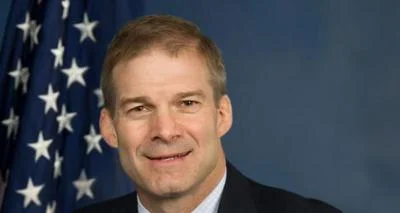The Congressional Record is a unique source of public documentation. It started in 1873, documenting nearly all the major and minor policies being discussed and debated.
“REBUILDING AMERICA'S INFRASTRUCTURE THROUGH PUBLIC-PRIVATE PARTNERSHIP” mentioning the U.S. Dept. of Transportation was published in the House of Representatives section on pages H513-H514 on Feb. 12, 1997.
The publication is reproduced in full below:
{time} 1845
REBUILDING AMERICA'S INFRASTRUCTURE THROUGH PUBLIC-PRIVATE PARTNERSHIP
The SPEAKER pro tempore. Under a previous order of the House, the gentlewoman from Connecticut [Ms. DeLauro] is recognized for 5 minutes.
Ms. DeLAURO. Mr. Speaker, today I introduced four bills that I hope will add to the dialogue about the Federal Government's role in establishing public-private partnerships to leverage both public and private investment in America's infrastructure.
Congress has recognized that our Nation simply does not have the resources to fix and rebuild all of our schools, our highways, mass transit facilities, environmental infrastructure, ports and airports and other infrastructure facilities. Public-private partnerships hold great potential in helping to fill this estimated $30 billion to $80 billion in annual Federal investment, a shortfall in America's infrastructure. In the process we have the opportunity to create hundreds of thousands of new jobs.
Congress started to address the idea of leveraging both public and private investments in infrastructure during the debate over the Intermodal Surface Transportation Efficiency Act of 1991. In addition to promoting discussion about innovative financing tools, the legislation granted to States the authority to establish something called a State infrastructure bank, or an SIB, in cooperation with the Department of Transportation.
The Department of Transportation has now enabled ten States to establish the State infrastructure banks, which are intended to attract both public and private investment in transportation infrastructure. These entities, the State infrastructure banks, are funded using an allotment from the States' Federal transportation apportionments.
The success of the newly created SIB's is limited by undercapitalization and an inability to leverage projects other than highway and mass transit infrastructure. The bills that I offered today will try to provide several solutions for addressing these weaknesses in a constructive and cost-effective manner.
Building on the effectiveness of the financial mechanisms created by these State infrastructure banks, I introduced four bills that will greatly expand the role of these kinds of entities and are related to public-private partnerships.
The first bill is the State Infrastructure Bank Expansion Act, which works by studying ways to expand the use of, and to increase the capital, the money, for these State infrastructure banks.
The second bill, the National Infrastructure Development Corporation Act, creates a Federal entity that functions much like these State creations.
The third bill, the Public Benefit Bonds Innovative Financing Act, creates a new form of infrastructure bond that can be purchased by institutional investors.
The last bill, the National Infrastructure Development Act, ties the two latter vehicles together as a comprehensive approach to leveraging public and private investments in infrastructure.
The first bill, the State Infrastructure Bank Expansion Act, directs the Secretary of the Treasury, in cooperation with heads of other Federal departments, to study the way in which the State Infrastructure Banks can be expanded. The purpose of the study is to determine whether the State banks could be used to finance projects outside of the realm of transportation, so that we can include other areas that could be utilized by the State bank.
I also reintroduced the National Infrastructure Development Act. This bill uses two financing mechanisms to attract private capital. First, the National Infrastructure Development Act creates a new category of a revenue-neutral bond called a public benefit bond. These are tax-exempt bonds which can be used by investors to attract capital for infrastructure development.
The act would also create a Government-sponsored corporation that would have the same kinds of functions as a State Infrastructure Bank, but with expanded authority. The lending corporation would eventually become fully privatized once it has the capital it needs by way of returns on its infrastructure investments.
What I want to do with these bills is to open up a bipartisan discussion about the ways in which we can create the most effective financing tools for rebuilding America's infrastructure. In the era of declining Federal budgets, what we need to do in an effort to try to create jobs, we need to create these jobs and at the same time to try to save the Federal Government money. We need to have private financing tools, private investment, in investing in America's infrastructure.
Today there are many, many American corporations who are investing in infrastructure in Third World countries. What we want to do is to try to capture some of those investment funds and have them invested right here in the United States, where we can rebuild our schools, our roads, our bridges, our mass transit system, our rail system, our airports, our environmental facilities, and in the process, create hundreds of thousands of new jobs.
I urge my colleagues to study the bills over the coming weeks and months. I hope they will be able to demonstrate their support for these kinds of public-private partnerships. I thank the Members for their consideration.
____________________








